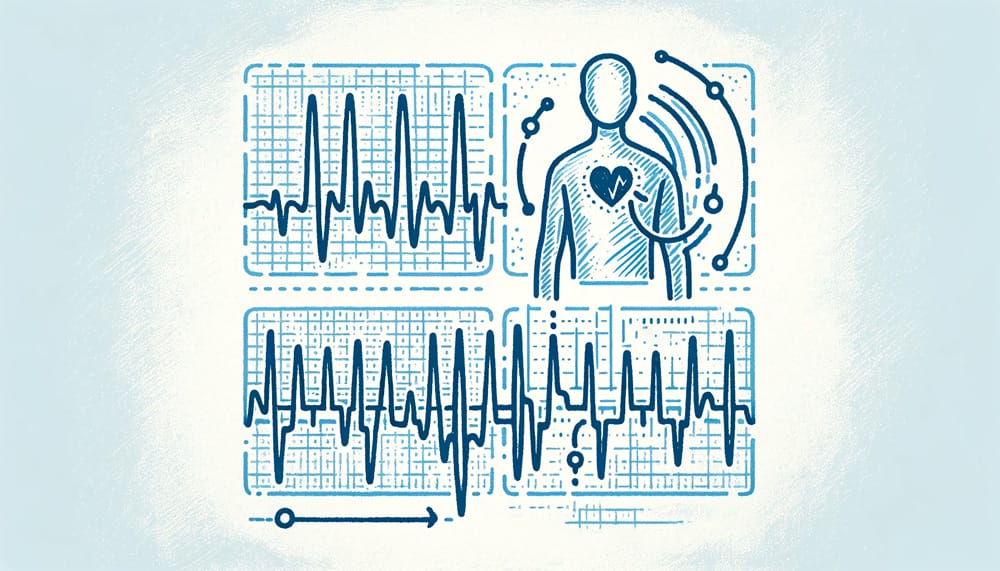The Vital Role of HRV in Understanding Stress
Heart Rate Variability (HRV) stands at the forefront of modern approaches to stress management and recovery. It provides a measurable and direct link to our autonomic nervous system, the primary system involved in stress response and relaxation processes. Understanding HRV in the context of stress is pivotal, as it offers more than just an overview of stress levels; it reveals the intricacies of how our bodies and minds interact and respond to stressors.
Chronic stress, a common challenge in today’s fast-paced world, can lead to significant health issues, including cardiovascular diseases, mental health disorders, and immune system dysfunction. HRV serves as a critical biomarker, indicating how well the body is coping with stress. Typically, a high HRV suggests a healthy, resilient autonomic nervous system, capable of effectively managing stress. Conversely, a consistently low HRV may signal chronic stress, poor recovery, and potential health risks.

The dynamic nature of HRV allows for a nuanced understanding of individual stress responses. Factors like emotional states, sleep quality, physical health, and even daily routines influence HRV, making it a comprehensive indicator of overall stress and well-being. By monitoring HRV, individuals and clinicians can identify patterns and triggers of stress, enabling proactive management and intervention.
“In the intricate dance of stress and relaxation, heart rate variability emerges as a key player, revealing the subtle yet profound ways our bodies and minds navigate the challenges of modern life.”
HRV also reflects the body’s capacity for recovery from stress. In the phases of relaxation and rest, HRV should ideally increase, indicating a shift towards parasympathetic dominance – the ‘rest and digest’ state. Monitoring these recovery phases is crucial in stress management, as insufficient recovery can exacerbate the effects of stress and lead to a downward spiral in health.
In-depth HRV analysis, therefore, not only helps in identifying stress levels but also provides insights into the effectiveness of various stress management techniques. From mindfulness practices to physical activity, HRV can guide individuals in choosing the most beneficial strategies for their unique physiological makeup.
For a deeper understanding of HRV and its implications in health, our Ultimate Understanding Heart Rate Variability (HHRV): A Comprehensive Guide provides a comprehensive overview.
HRV as a Guide in Personal Stress Management

HRV’s real-time feedback on autonomic function makes it an invaluable tool for personal stress management. By observing fluctuations in HRV, individuals can gain insights into their body’s responses to different stressors and lifestyle habits, paving the way for informed decisions that enhance well-being.
For instance, HRV can reveal how certain work environments, social interactions, or even leisure activities affect stress levels. Understanding these impacts can motivate individuals to make changes that promote relaxation and recovery. Activities that typically increase HRV, such as deep breathing exercises, yoga, or spending time in nature, can be consciously integrated into daily routines to counteract stress. Discover the transformative impact of heart rate variability in sports science for athletes in our concise article, “Harnessing HRV in Sports Science: A Game-Changer for Athletes“.
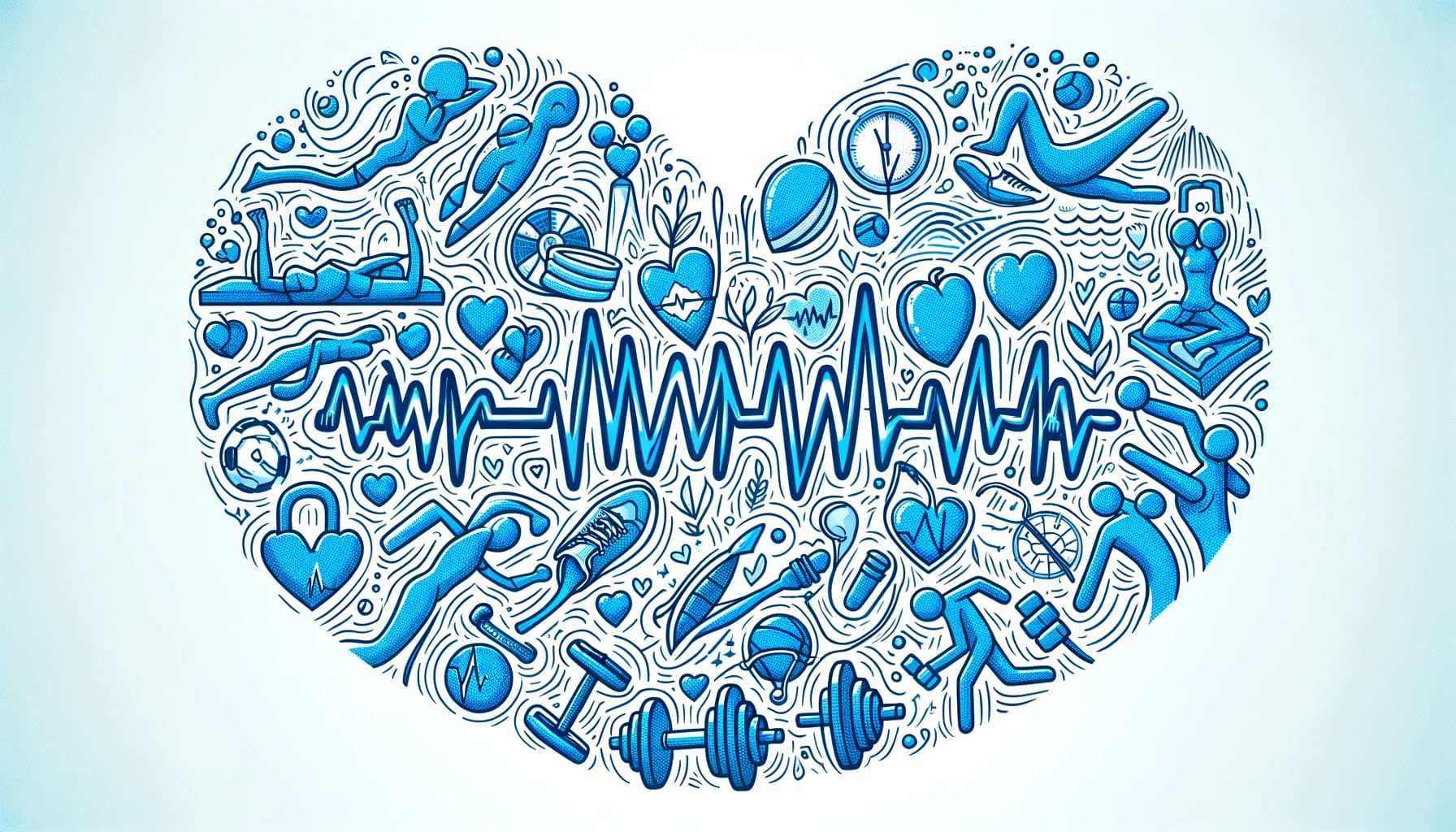
The relationship between specific stress management techniques and HRV is multifaceted. Techniques that focus on calming the mind and body, such as meditation and progressive muscle relaxation, can directly influence HRV by enhancing parasympathetic activity. Over time, regular practice of these techniques can lead to noticeable improvements in HRV, reflecting enhanced resilience and stress management capability. The comprehensive impact of stress and the importance of recovery is further explored in HRV and Mental health: Beyond Stress and Anxiety, which delves into how HRV can guide overall wellness strategies.
“Offering real-time insights, heart rate variability becomes a personal compass in navigating the complex terrain of stress, illuminating paths to tranquility and resilience.”
Personalized stress management goes beyond general recommendations. By using HRV data, individuals can tailor their stress reduction practices to align with their unique physiological responses. This personalized approach is crucial, as what effectively reduces stress for one person may not have the same impact for another.
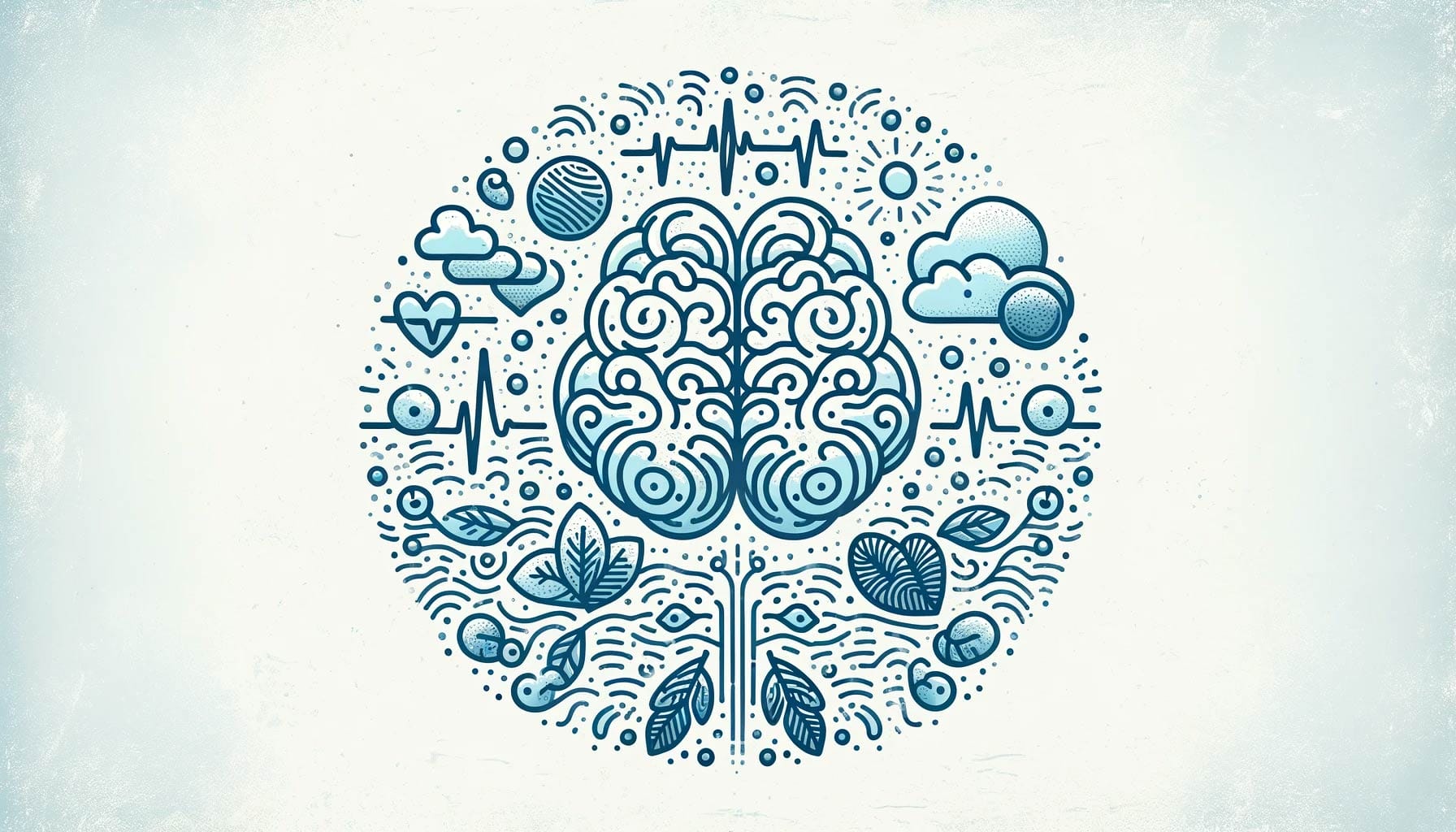
HRV monitoring can also encourage a proactive approach to health. Instead of reacting to stress once it becomes overwhelming, individuals can use HRV data to recognize early signs of stress and take immediate action. This proactive management can prevent the accumulation of stress and its negative health consequences. For a broader view of HRV’s role in psychological health, the article HRV The Role of HRV in Psychological Research: Uncovering Mental Health Insights offers valuable insights into how HRV is used to understand and manage mental health conditions.
“HRV transforms stress management from a reactive to a proactive endeavor, enabling individuals to harmonize their body’s responses with their lifestyle choices.”
The value of HRV in personal wellness and stress management extends to all aspects of life. It empowers individuals to take control of their stress levels, improve their health, and enhance their overall quality of life. By becoming more attuned to the messages their body sends through HRV, individuals can embark on a more balanced, healthful journey through life. Discover how heart rate variability is revolutionizing personalized medicine in our article, “HRV and Personalized Medicine: Tailoring Health Strategies for Individual Needs“.
HRV in Clinical Stress Management and Therapy
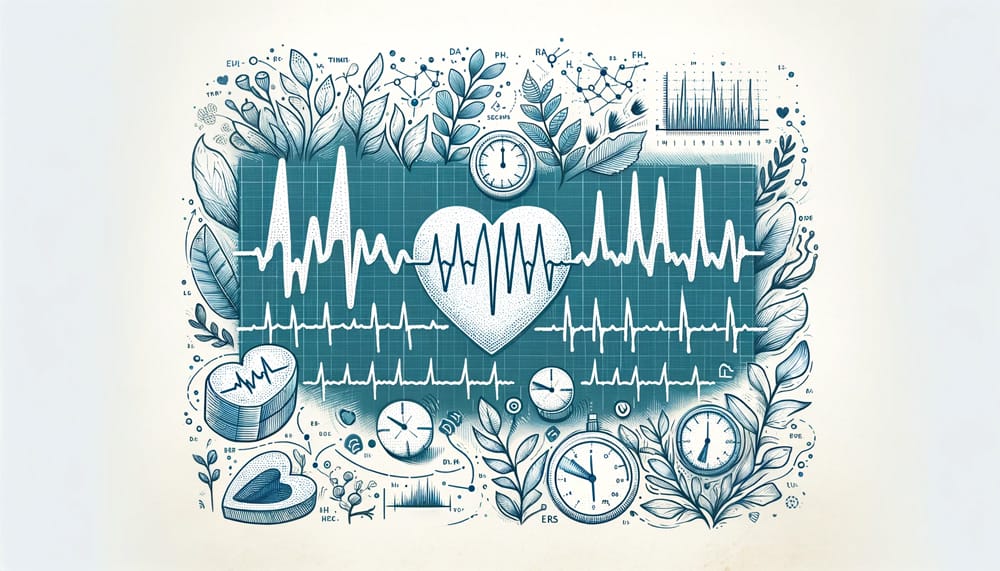
In the realm of mental health and therapy, HRV has emerged as a vital tool for assessing and managing stress. Mental health professionals are increasingly using HRV data to tailor treatment plans and monitor the progress of individuals undergoing therapy for stress-related conditions.
HRV biofeedback, a technique that involves teaching individuals to control and improve their HRV, has shown promise in clinical settings. By learning to influence their HRV, patients can develop stronger emotional regulation skills, better manage their stress responses, and enhance their overall resilience. This form of biofeedback therapy has been particularly effective in treating conditions like anxiety, post-traumatic stress disorder (PTSD), and stress-induced depression. Gain deeper insights into the role of heart rate variability in mental health, beyond stress and anxiety, in our article, “HRV and Mental Health: Beyond Stress and Anxiety“.
“In the delicate dance of mental health, heart rate variability serves as a guiding light, offering a path to harmony between mind and body, stress and serenity.”
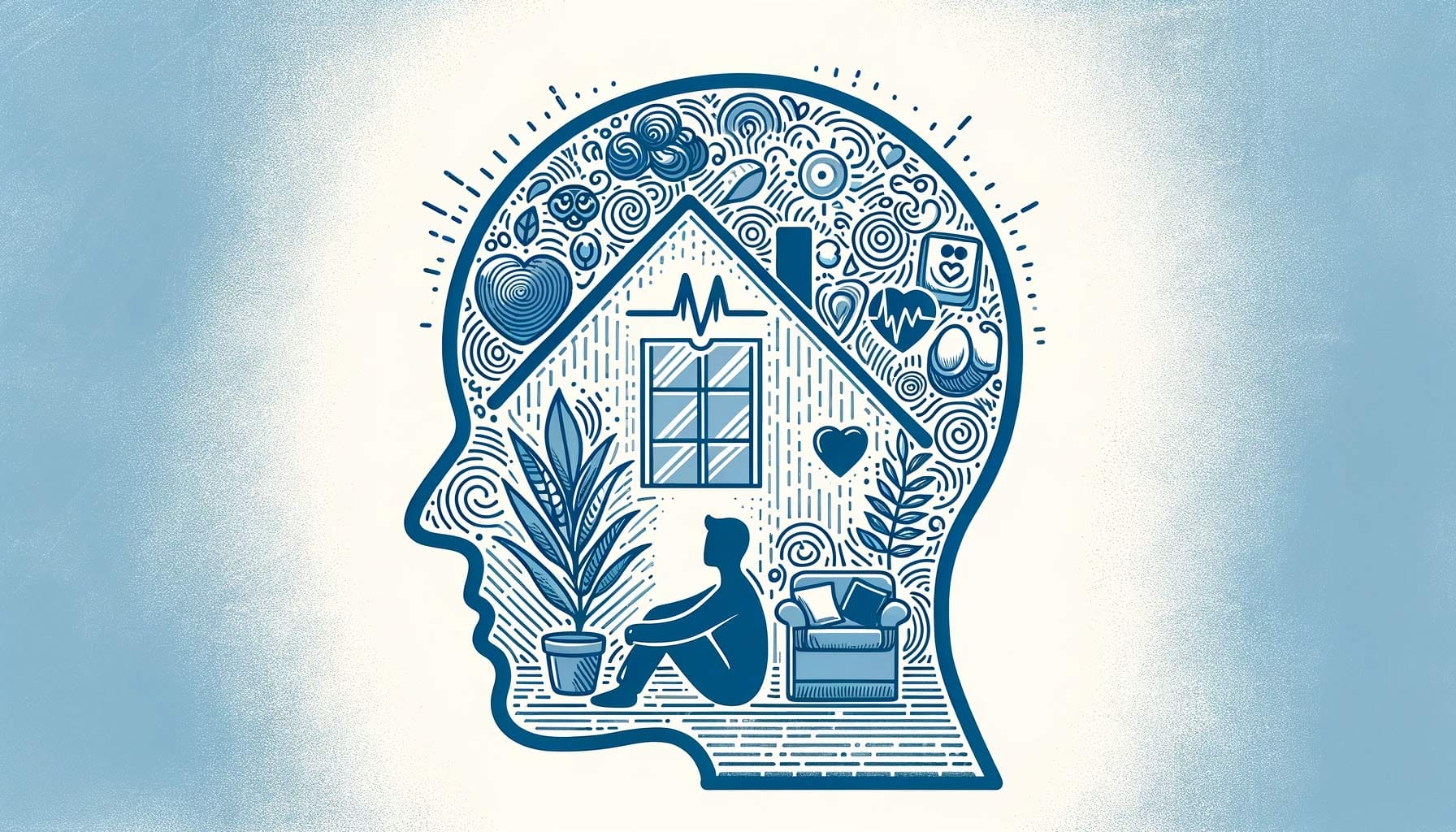
The process of HRV biofeedback typically involves real-time monitoring of a patient’s HRV while they engage in relaxation or breathing exercises. Patients can see how their HRV changes in response to these practices, which reinforces the connection between their physiological state and stress management techniques. Over time, patients learn to replicate these positive changes without the need for monitoring, leading to long-term improvements in stress resilience. Learn about the crucial role of heart rate variability in respiratory health and disease management in our focused article, “HRV in Respiratory Health and Disease Management“.
HRV-guided therapy extends beyond biofeedback. Clinicians also use HRV data to evaluate the effectiveness of various therapeutic interventions, from cognitive-behavioral therapy (CBT) to pharmacological treatments. For instance, a consistent improvement in HRV can indicate that a particular therapy is effectively reducing stress and enhancing autonomic balance. Gain insights into how drugs affect heart rhythms by reading our informative article, “HRV and Pharmacology: Drug Effects on Heart Rhythms“.
“HRV in clinical therapy is a compass guiding the journey of stress recovery, illuminating the path to emotional and physiological balance.”
The application of HRV in therapy also helps in identifying individuals who may be more vulnerable to stress and its health impacts. By understanding these vulnerabilities, therapists can develop more targeted interventions that address both the psychological and physiological aspects of stress.
In clinical practice, HRV represents a bridge between physical and mental health. It allows therapists to take a holistic approach to stress management, considering both the mind and body in their treatment strategies. This holistic perspective is crucial for effective stress management and recovery, as it addresses the root causes of stress rather than just its symptoms.
Stress, Recovery, and HRV: The Holistic Connection

Chronic stress, when left unchecked, can disrupt the delicate balance of the autonomic nervous system, often reflected in a consistently low HRV. This state of imbalance affects both mental and physical health, increasing risks for a variety of conditions including cardiovascular diseases and weakened immune function. Effective recovery from stress is thus vital for maintaining health and well-being.
HRV is instrumental in assessing recovery processes. Following periods of stress, an increase in HRV during relaxation or rest is indicative of a healthy shift towards parasympathetic dominance, the body’s ‘rest and digest’ state. This shift is essential for recovery, as it allows the body to repair and rejuvenate.
“HRV in the context of stress and recovery highlights the dance between exertion and relaxation, guiding us towards a rhythm that promotes health and resilience.”

Monitoring HRV can provide valuable insights into individual recovery patterns. It can reveal whether current lifestyle choices and stress management strategies are effective or whether adjustments are needed. For instance, consistent low HRV despite relaxation practices might indicate the need for more comprehensive or different stress management techniques.
Furthermore, understanding HRV can help individuals recognize the importance of balance between stress and recovery. It underscores the need for regular periods of relaxation and restorative activities, emphasizing that effective stress management is not just about reducing stressors but also about enhancing the body’s ability to recover.
Challenges and Future Directions in HRV-Based Stress Management

Applying HRV in stress management, while promising, comes with its own set of challenges. One significant challenge is the variability in HRV readings, influenced by factors such as age, gender, and lifestyle, which necessitates a personalized approach in interpretation and application. Delve into the role of heart rate variability in aging and geriatric research in our article, “HRV in Aging and Geriatric Research: Understanding the Aging Heart“.
Advancements in HRV technology and data analysis promise to overcome some of these challenges. Improved algorithms for HRV analysis and the development of more sophisticated wearable devices could offer clearer insights into the autonomic changes associated with stress and recovery.
“Heart rate variability stands as a beacon in the complex journey of stress management, navigating the diverse seas of individual experiences towards a haven of tailored tranquility.”
Future research in HRV-based stress management aims to refine our understanding of autonomic changes under different types of stressors and recovery practices. This research could lead to more personalized and effective stress management strategies, enhancing our ability to manage stress and recover more efficiently.
Exploring the potential of HRV in personalized medicine is a promising direction. By tailoring stress management strategies based on individual HRV profiles, healthcare providers can offer more effective and targeted interventions. This personalized approach could significantly improve patient outcomes and quality of life. Discover how heart rate variability is revolutionizing personalized medicine in our article, “HRV and Personalized Medicine: Tailoring Health Strategies for Individual Needs“.
Conclusion: Navigating Stress and Recovery with HRV

HRV has emerged as a critical tool in understanding, managing, and recovering from stress. Its ability to provide real-time insights into the autonomic nervous system offers a unique perspective on stress management. Incorporating HRV monitoring into stress management strategies allows individuals to achieve a more balanced and healthier lifestyle, both mentally and physically.
As we continue to explore the potential of HRV in stress management, its role in enhancing our understanding of stress and guiding effective recovery strategies becomes increasingly clear. HRV is more than just a health metric; it’s a vital component in the journey towards holistic well-being, offering new pathways to manage stress and enhance quality of life.
You Might Also Be Interested
- 📚 Delve into our comprehensive HRV Article Collection for insightful perspectives on Heart Rate Variability (HRV).
- 🔍 Learn how the advanced features of Fibion Emfit & Fibion Vital can aid you in your HRV research.
- 📅 Planning an HRV measurement and analysis? For a chat with our HRV expert, book a session with Dr. Miriam Cabrita.
Frequently asked questions about this topic:
How does HRV provide insights into an individual’s stress levels? +
HRV reflects the balance of the autonomic nervous system, influenced by stress. A high HRV suggests a healthy response to stress, while a low HRV may indicate chronic stress and poor recovery.
What is the significance of HRV in personal stress management? +
HRV’s real-time feedback helps individuals understand how different stressors and lifestyle habits affect their stress levels, enabling them to make informed decisions to enhance well-being.
How is HRV used in clinical stress management and therapy? +
HRV biofeedback in therapy helps patients develop stress management skills, enhancing resilience. Clinicians use HRV data to tailor treatments and monitor progress in stress-related conditions.
What is the role of HRV in understanding the recovery process from stress? +
HRV analysis during recovery phases reveals the effectiveness of relaxation practices. An increase in HRV during relaxation indicates a healthy recovery from stress.
What challenges are associated with using HRV for stress management? +
Challenges include variability in HRV readings influenced by individual factors and the need for personalized interpretation. Advancements in technology and analysis aim to address these challenges.
What future developments are anticipated in HRV-based stress management? +
Future research aims to refine understanding of autonomic changes under stress and recovery, leading to more personalized and effective stress management strategies based on HRV profiles.










